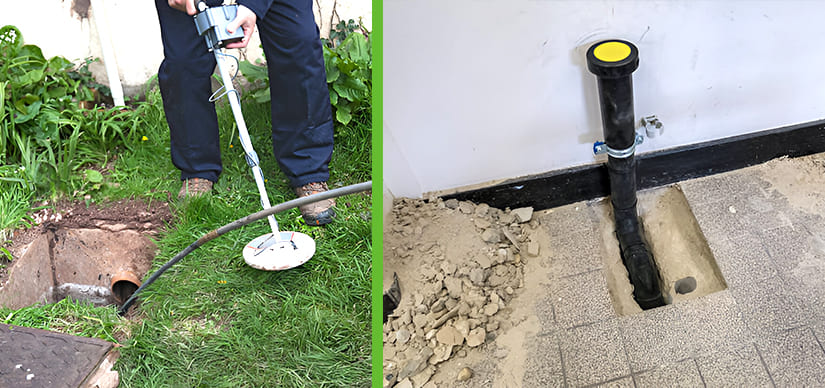What It’s Like to Deal with a Slab Leak – A Homeowner’s Firsthand Experience
Views : 671

The Shocking Discovery: Signs of a Slab Leak
- A damp, warm floor spot in my living room.
- Higher water bills, even though my usage hadn't changed.
- A small sound of dripping water when all appliances were off.
Confirming the Leak: Professional Slab Leak Detection
- Electronic Leak Detection- This is where the plumber uses special listening devices to hear the water flow and trace the leak location.
- Pressure Testing- They tested the water pressure on different pipes to prove where the fault was.
- Infrared Scanning – A thermal camera helped detect changes in temperature attributed to water leaks.
The Repair Dilemma: How to Fix a Slab Leak
- Direct Access Repair: This is the breaking through the concrete slab to directly repair the damaged pipe. It was fast but involved cutting into my flooring.
- Pipe rerouting : piping to bypass the affected section to prevent further damage of the foundation.
- Epoxy Pipe Coating : Applying special epoxy to seal small leaks inside the pipe without breaking the floor.
The Repair Process: What Really Happens?
- Turn Off the Water – My water supply was cut off to ensure no further damage.
- Dig and Reroute Pipes – The plumbers opened a small portion of the wall and rerouted some pipes to avoid major floor damage.
- Leak Testing and Final Checks – After installing new pipes, they ran tests to ensure there were no more leaks.
- Restoration of the Home – The wall was patched up, and the area was cleaned.
The Cost and Emotional Toll of a Slab Leak
- Cost of slab leak detection: approximately $250-$500 based on the intricacy
- Replacing a pipe: The cost may vary between one thousand five hundred and three thousand five hundred dollars depending on how many pipes need changing.
- Total cost of the repair: Considering minor restoration, I spent approximately $4,000.
How Not to Face Slab Leaks in the Future
- Track Your Water Bill
A sudden rise in your bill might indicate an underground leak. - Schedule Periodic Plumbing Inspections
Regular slab leak detection, every few years, catches minor leaks before they develop into major problems. - Avoid Corrosive Chemicals
Use harsh drain cleaners as they might damage the pipes and lead to leakages. - Control Water Pressure
Water pressure causes pipes to stretch and leads to leakages. This can be avoided by installing a pressure regulator by a plumber, if necessary. - Quality Piping Material
f building or remodeling, ensure that durable and leak-resistant pipes are used to avoid future risks.
Conclusion
FAQs
Q1. What are the initial symptoms of a slab leak?
Monitor for mysterious water puddles, damp or warm areas on floors, increased water bills, and sounds of running water when no fixtures are being used.
Q2. How is a slab leak detected?
Electronic leak detection, pressure testing, and infrared cameras are used to identify concealed leaks without the need for excavation.
Q3. What is the duration for repairing a slab leak?
It may take as little as a few hours to repair a slab leak using methods like epoxy coating, while others, such as rerouting or direct access repairs, can take up to 2 or 3 days.
Q4. Does a slab leak pose any significant risk to your house?
Definitely! Mold growth, foundation problems, and structural weakening are all possible consequences of a slab leak. Ignoring it can lead to costly repairs.
Q5. Will homeowner's insurance pay for a slab leak?
It depends on your policy. Some insurance plans cover sudden leaks but may not cover long-term wear and tear or pre-existing issues. Always check with your provider.




